Answers to Frequently Asked Questions About Babywearing
(This post contains affiliate links. Read my full disclosure.)
When I agreed to write a post on “babywearing basics”, I honestly didn’t know what to write! Sometimes, when something is such an everyday part of your life, you don’t really remember what the “basics” are. So, I decided to go to the best place I know for crowd-sourcing — Facebook! — and got a huge response.
All the questions and feedback I received were the catalyst for what turned into an entire series of “babywearing basics” posts, concluding with this collection of answers to the most frequently asked questions. These are really in no particular order, but I hope you find them helpful.
Babywearing FAQ
What is the difference between all the main types of baby carriers?
The question I got over and over was about the difference between all the main types of baby carriers. Here is an overview of the basic types of baby carriers. Gretchen also outlined her favorite baby carriers.
How should I babywear safely?
Various questions and queries regarding safety were addressed in the post Babywearing Safety Considerations.
Should I try to help someone who is putting on a baby carrier?
The short answer is: no! Click here to read why you should never help someone with a baby carrier unless they ask.
Can you babywear while pregnant?
Yes, definitely! Obviously, don’t exhaust yourself. You’ll probably have to adjust what carriers and carry styles you use as your bump grows, but it’s easily done. I’ve worn woven wraps and SSCs throughout my pregnancies and I’m planning on trying it with my new mei tai this time around as well. For me, with SSCs (and by extension, mei tais), it’s most comfortable to have the waist strap go below my bump. With my woven wrap, I tend toward carries that have most of the weight borne in the chest area (like the Double Hammock), rather than at the waist or across the stomach.

How do you avoid getting overheated while babywearing?
There are a couple things to think of when you’re babywearing in warm weather/climates. Firstly, avoid thick stretchy wraps like the Boba or Moby. With the heaviness of the material and how many layers you need to ensure that the baby is secure, it can feel like you’re wearing a sweatshirt. Lighter wraps like a Solly Baby stretchy or lightweight wovens work well, as do SSCs or slings.
Another trick I learned with my second little one is to put a layer of material between your baby’s face and any bare skin on your upper chest. At first it seems counter-intuitive to add another layer, but putting something between your warm skin and your baby’s warm skin keeps you both from getting even warmer. I liked using an aden + anais blanket for that, or if I was using my woven, I would tuck a tail up there.
And obviously, keep your and your baby’s clothing to a minimum. Mom wearing a tank or camisole and baby in an onesie or just a diaper is really all that’s needed in warm weather.
Are there better carriers for different kinds of weather/seasons?
Other than choosing a lighter weight carrier for warmer weather (see previous question on avoiding getting overheated while babywearing), most baby carriers can be used in all types of weather. If you’re going out in cold weather, make sure to dress your baby appropriately, but be careful with fluffy coats and snowsuits as they can give the appearance of a secure carry that sometimes isn’t there. If you babywear in cold weather a lot, you can also look into babywearing coats (a common brand is Peekaru). I found a Peekaru fleece babywearing vest on major clearance a couple years ago and I’ve loved it! Even without sleeves and just being fleece, I was surprised at how very warm it was since it trapped in the shared body heat between my baby and I.
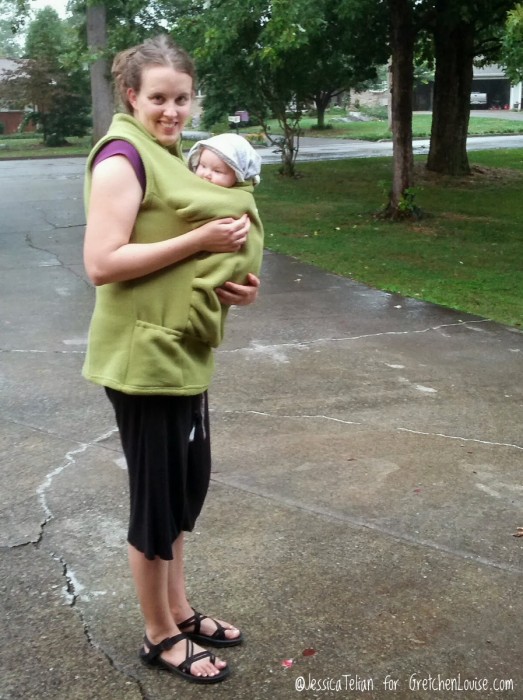
What are the best tips for back wrapping?
Number one tip for back wrapping: don’t be intimidated. Number two: practice! Pick one carry at a time, and watch some YouTube videos on it (or better yet, get some hands-on help from an experienced wrapping friend or find a babywearing group). Then, at a time when your baby is calm and fed, practice over a bed and/or with someone spotting you. If baby starts to protest or you get frustrated, then take a break and come back to it. You’ll get it eventually and be back wrapping like a pro!
Sometimes I get asked what are the “best” back carries with a woven wrap, and honestly, that’s totally a matter of your personal preference, what baby likes, and how long your wrap is. My wraps have all been on the long side (I wanted the versatility without having a bunch of different sizes around) so I tend toward carries with multiple passes like the Double Hammock (DH) or Back Wrap Cross Carry (BWCC). Watch some YouTube videos, try out a couple different ones, and see what you like and your baby likes.
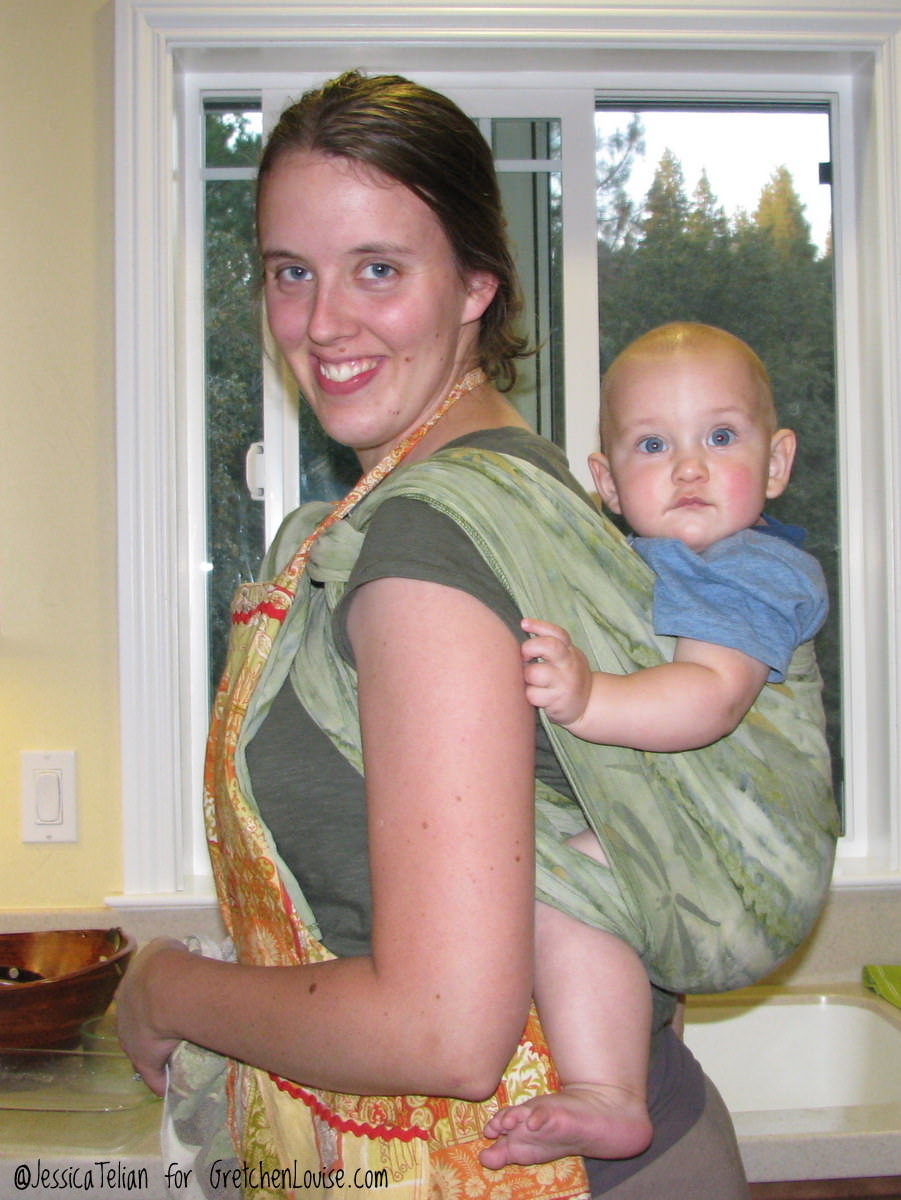
What are good times to use a wrap?
This is definitely just a matter of personal preference! Some babywearers I know use wraps exclusively and in every situation. Others, like myself, use wraps along with other carriers, and decide which one to use based on the situation, the age of the baby, etc. For myself, I use wraps (woven and stretchy) almost exclusively in the first couple months of the baby’s life. I have yet to find another carrier that keeps my newborns as snug as wraps do, and because my babies are being worn many hours a day at that age, the extra hassle of wrapping isn’t a really an issue. I start using my SSC a lot more when the baby hits five or six months, as they then have more interests than constantly being worn and I find the SSC a lot more convenient for frequent up-and-downs. Our woven wrap is still a constant throughout birth to toddlerhood, especially for times of wanting to just snuggle (when given a choice when they’re tired, my toddler and preschooler will almost always choose a wrap for going “up”). If you’re interested in pursuing wrapping, I would definitely recommend trying it, but if possible, it would be good to also have a “faster” carrier on hand as well in case the hassle of wrapping gets to be too much at times.
Are there differences in using a wrap a newborn or an older baby/toddler?
Other than the carries that you use, there’s not really much of a difference between using a wrap with a newborn versus an older baby or toddler. As was mentioned in the post on safety considerations, while it’s possible to back-wrap a newborn, it’s not recommended unless you’re an advanced wrapper and have had specific instruction in doing so.
Whenever I read anything about babywearing, I’m so confused with all the acronyms, especially related to using a woven wrap. Can you explain those?
Some of the acronyms tossed around in the babywearing world are related to carrier types: “SSC” is “soft-structured carrier”, “MT” is “mei tai”, “WCMT” is “wrap conversion mei tai” and “RS” is “ring sling”…all of which are explained in more detail in the overview of baby carrier types. The vast majority of acronyms related to wrapping are the abbreviated names of carries: “DH” is “Double Hammock”, “FWCC” is “Front Wrap Cross Carry”, etc. Here is a very comprehensive list of most of the different carries with abbreviations and lots of other info.
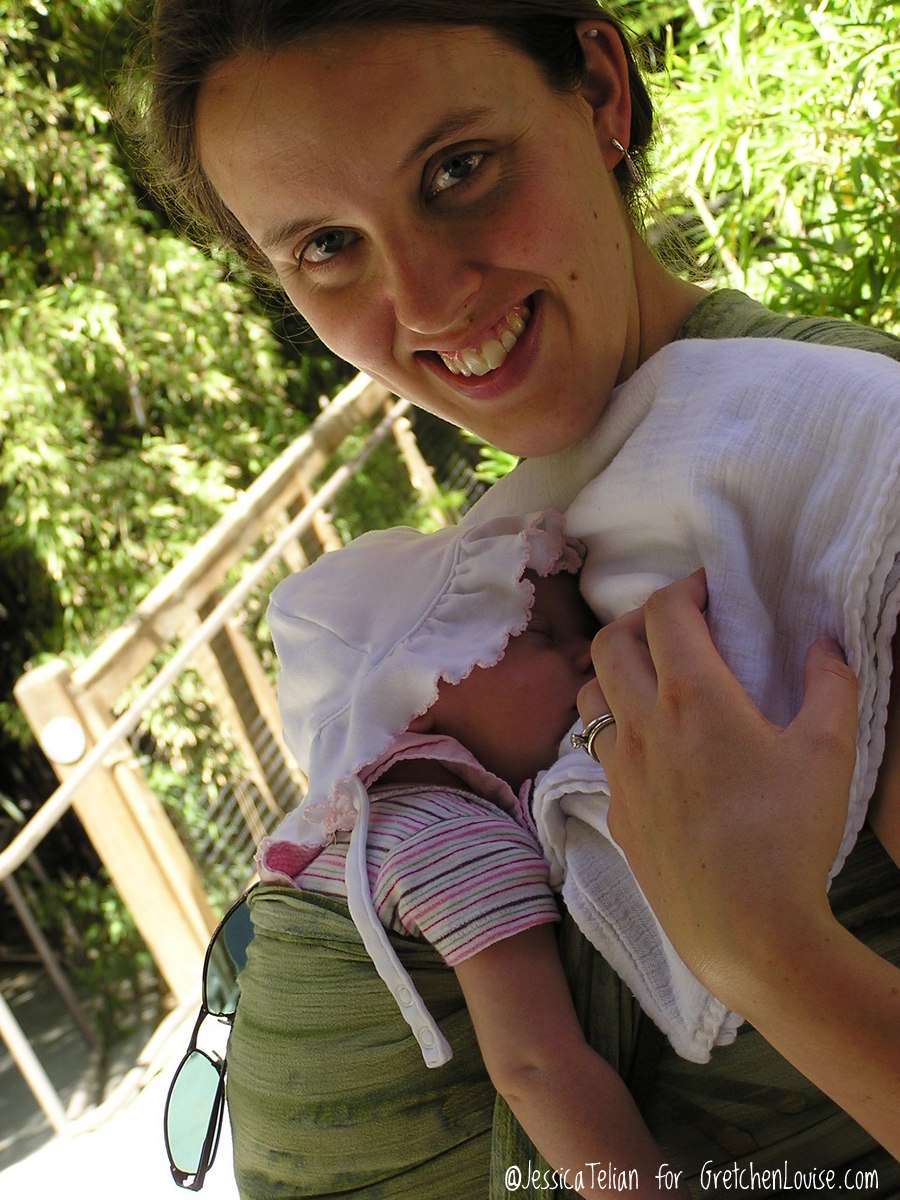
What should I do if my baby hates being worn?
I’ve never personally dealt with this, but one of my good friends has and she wrote an excellent post on the subject: what to do if your baby does not like babywearing. I highly recommend it!
Can I wear my baby facing foward?
The issue of whether or not to carry your baby facing foward is a pretty controversial one in the babywearing world. One of the biggest concerns with wearing your baby facing forward is that most forward-facing baby carriers do not properly support your baby’s legs. As was mentioned in the safety post, it’s very important to keep your baby’s hips and thighs supported by having them in an “M” position with the knees higher than the bum, and the weight being borne by the baby’s bottom. This keeps gravity from pulling on the baby’s dangling legs and putting strain on their hips. Having supported hips is easily achieved if the baby is facing the wearer in a carrier that has the seat portion going from knee to knee. This is much harder to in a carrier that has the baby facing forward.
Another concern with wearing your baby facing forward is that the position places the baby in an arched back position that can cause strain on their back. It’s a much more natural position to have the baby leaning forward into the wearer.
Having the baby facing forward also makes it difficult for the baby to “hide” themselves from unwanted stimuli if need be. I know that all my babies have regularly felt the need to do that when faced with lots of noise, people in their faces, etc. Having Mom’s chest or back right there has provided a safe place for them to go if they feel the need, something that wouldn’t be available if they were facing forward.
From these few paragraphs, I’m sure you can guess where I fall in the “wearing baby facing forward” controversy. This article from Boba provides even more reasons that it’s not a good idea: Nine Reasons Not to Carry Your Baby Facing Out.
When can a baby safely ride on your back?
Babywearing on your back can be incredibly convenient and helpful, but it adds another layer of safety considerations due to the fact that you are not able to keep your arms around your baby if need be. When using a woven wrap, babies can be worn on your back from birth on, but this is a very advanced babywearing skill and needs to be done in a very specific manner. Babies should not be worn on your back in a SSC or mei tai until they have strong and consistent control of their head, neck and torso. As your baby is no longer “kissable” and “in view”, please don’t attempt to rush back carrying until you have the experience to do so safely.

Are there better carriers for different body types?
As baby carriers are made to be worn by a wide variety of body types, there are not really better carriers for different body types. Of the basic types, SSCs are probably the least adjustable, but even those have several different places to adjust the straps to best fit the wearer. Any good carrier should list the maximum length that the waist belt and shoulder straps extend to. As a very tall mama (a half inch shy of six feet!), I’ve never had an issue with a carrier not fitting me, but I have heard that some SSCs are difficult to wear if you’re very short or petite. If that is a concern, you could try to find a brick-and-mortar store that sells baby carriers to try several different SSCs on or you could go with something a little more forgiving and adjustable like a mei tai or a woven wrap.
Are there better carriers for different size babies or is there a good one-size-fits-all? What carriers are best for which ages?
The only real one-size-fits-all carrier is a woven wrap. These can be used from birth to toddlerhood and are infinitely customizable. If you don’t want the learning curve or hassle of a wrap (I find it completely worth it, but some people might not and that’s totally fine), then the next one-size-fits-most option is a mei tai. Most mei tais can be worn from birth until 18 months to two years, but that would depend how long-legged your toddler is, as you want to be sure that their hips and legs are adequately supported. My post on baby carrier types gives a more in-depth look at the pros and cons of the different baby carrier types and what ages they’re best for.
How easy is it to breastfeed with the baby in the carrier? Can you breastfeed in a wrap?
It takes practice to breastfeed in a carrier, but it can definitely be done. It is something that I recommend practicing at home first. If you’re just getting the hang of breastfeeding, you’ll want to get that down pretty well before moving on to nursing in a carrier. The details depend on the type of carrier used, but the basic idea is to adjust the carrier so that baby’s face is about level with your breast and help them latch on. Depending on how you adjusted your carrier, you might need to use a hand or two to support your baby’s head while nursing. I’ve found my wraps the easiest to nurse in, but I’ve also nursed quite a bit in a SSC as well.
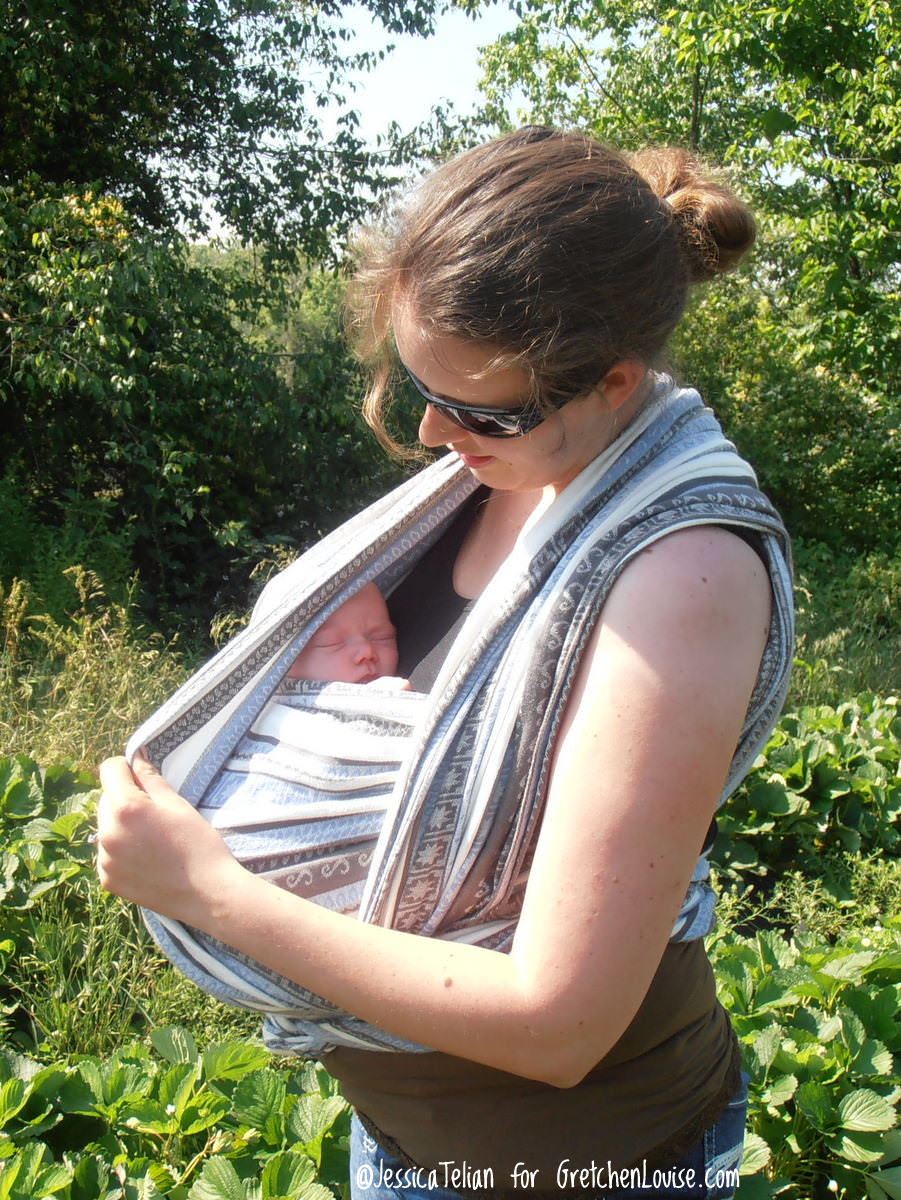
What are some good reference points for knowing that your baby and carrier are positioned well?
Check out my post on babywearing safety for more particulars, but a safety checklist that’s easy to remember is K.I.S.S.E.S.:
What is the best carrier for a bad back/shoulder?
I have not personally dealt with an issue like this, and I am not a medical practitioner, but I would assume that a carrier like a SSC that puts most of the weight on your waist would be helpful. Be sure to consult with your doctor, chiropractor, etc. before babywearing while injured. See also these posts from core fitness experts on pain free babywearing:
What are the top pros and cons for each carrier, especially a soft-structured carrier (SSC) like an Ergo and a woven wrap?
I addressed this in depth in my post on the different baby carriers. But here are some specific differences between a SSC and a woven wrap:
SSCs are easier to get the hang of and faster to put on, but they’re not nearly as versatile as a woven wrap. While some SSCs convert to being compatible with using with infants, others require a specific infant insert and while helpful, they won’t hold your newborn nearly as snug as a woven wrap will. SSCs are also limited in the upper end of the age range that they can safely be used for: unless they’re a specific toddler carrier, they only really work for babies up to 18 months or two years. Regardless of the weight of the baby, it’s doubtful that a standard SSC will properly support a baby’s hips and thighs past 18 months or two years.
Woven wraps are the only baby carrier that can truly be used from birth to toddlerhood while keeping the baby safe and fully supporting their hips and legs. Woven wraps are incredibly versatile regarding the type of carries that can be used. However, woven wraps also have the biggest learning curve of all the baby carriers, and some people would rather not deal with the hassle of learning and the extra few minutes of wrapping every time they want to wear their baby.
Why is it better to maybe spend a little bit more to get a carrier that will hold your baby in a healthy position instead of picking up a $5 Bjorn or Snugli at a garage sale?
I definitely understand the need and desire to acquire a couple different types of carriers without using up your savings. While everyone has a different budget for baby gear, I think it’s good to remember that the point is not to find the cheapest baby carrier you can. Many cheap carriers are unsafe to use and other’s don’t support your baby’s hips and thighs in a healthy manner. This leaves them basically dangling by their crotch, a position that can put unnecessary strain on a baby’s hips and back, and honestly, is just very uncomfortable! Yes, you might have to spend a bit more to make sure that you’re wearing your baby in a way that is safer and much more comfortable for them, but wouldn’t you do that with any other piece of baby gear, too?!
If you can only afford one or two carriers, which one should you get?
This is really a matter of personal preference. One woven wrap could get you from birth to toddlerhood, but not everyone wants to deal with wrapping. Some mei tais and SSCs work from birth to about two years old, but you’d have to make sure that the specific one you were looking at was suitable for an infant and had a wide enough seat to adequately support a toddler’s hips and thighs. Another option would be to get a stretchy wrap for the early months and then transition to a SSC when the baby got older and too big for a stretchy wrap. Gretchen detailed her favorites here.
How can you acquire multiple types of carriers without spending a fortune? How do you select a decent carrier on a tight budget?
See Rachel’s helpful post on this topic: she has a lot of great ideas about babywearing on a budget!
What does it mean to “break in” my woven wrap or sling?
Both woven wraps and slings are made with material that is woven and therefore can be somewhat rough and un-pliable when new. “Breaking in” that material involves doing various things to that material to make it softer and easier to use. Break in methods vary according to the fiber content of the material used and sometimes the brand of the wrap or sling. A Google search with those specifics will go a long way in giving you ideas for your carrier.
If I’m considering a woven wrap, how do I know what material I should get?
Most woven wraps are made of cotton, but others are blends of cotton and other materials such as linen, wool, silk, bamboo, and hemp. This link contains excellent information on the pros and cons of each material type along with their specific care.
When can I put my baby’s legs out in carrier?
General recommendation on this has gone back and forth some in the last couple years. The current recommendation is legs out from birth. If need be, baby can be worn legs in with baby sitting on their bottom (rather than their feet) until they start stretching their legs out.

And that’s all! I hope that these posts on the basics of babywearing have been helpful in your babywearing journey. Feel free to comment below with additional questions!



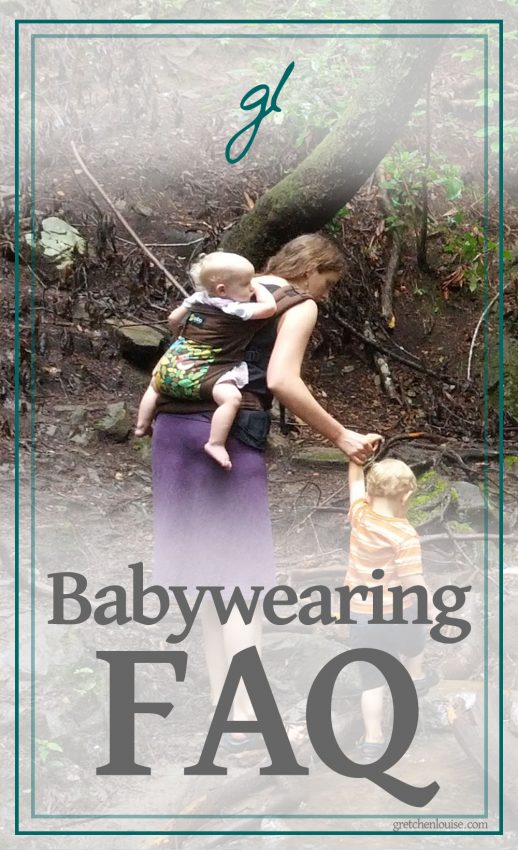
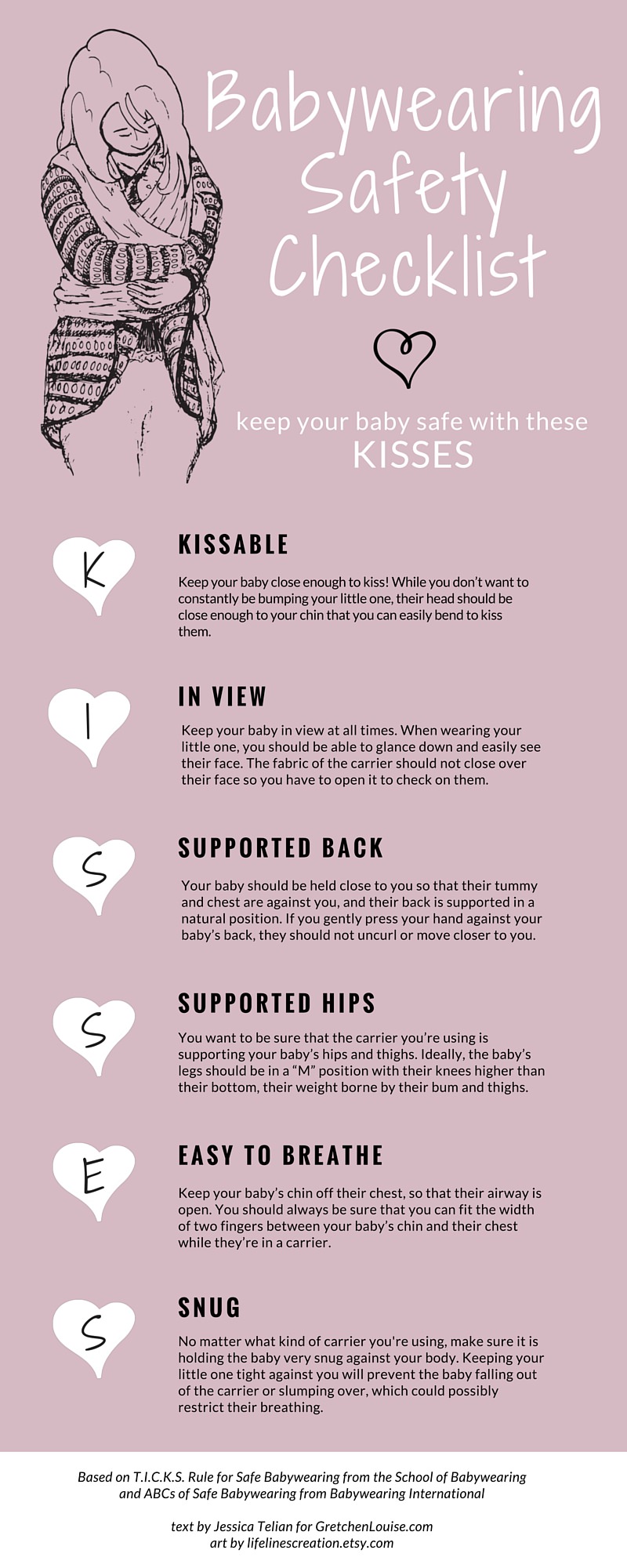
Thanks so much, Jessica Telian. These are the real and practical tips. I have been searching for some tricks and important points to holding my sister’s baby, and your tips are really useful. Really Appreciated!
Loved all your pictures of real life baby wearing!
Wow! Thank you so much for your detailed responses to all the questions that came in, Jessica. I really appreciate you sharing your expertise!